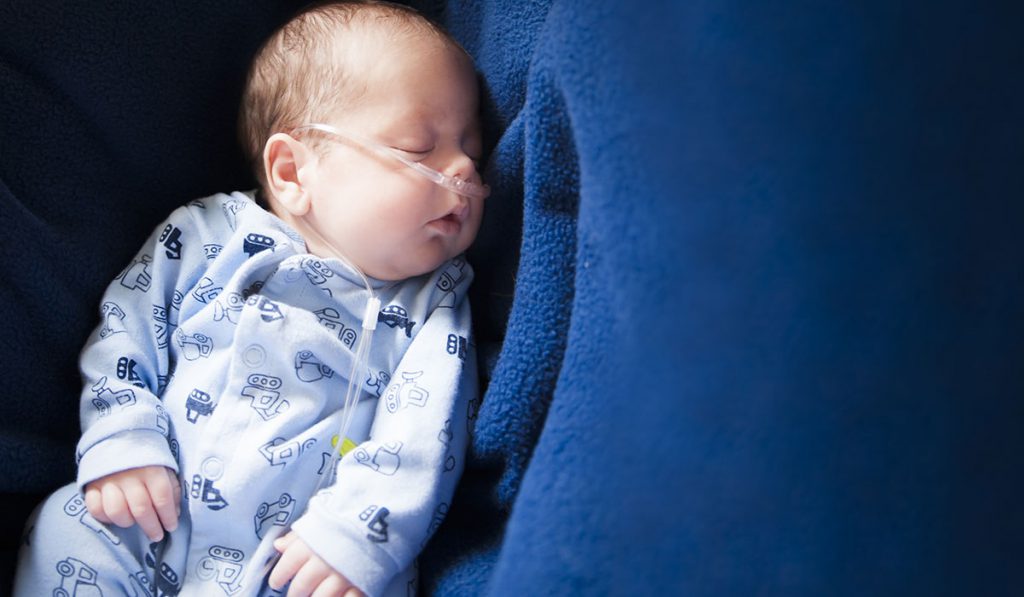The largest study to date of children with neuroendocrine cell hyperplasia of infancy (NEHI) has delivered new insights into the rare lung disease’s natural history, including its relation to a diagnosis of failure to thrive and supplemental oxygen use, developmental delays and respiratory morbidity.
Children with NEHI typically present in the first months to year of life with chronic tachypnea and hypoxemia. While gradual improvement occurs over time, research conducted at Monroe Carell Jr. Children’s Hospital at Vanderbilt found that duration of oxygen use is highly variable, and a diagnosis of failure to thrive was associated with longer continuous supplemental oxygen use in children with NEHI. It also found a surprisingly high rate of children (38 percent) who had some degree of developmental delays.
While the links between nutritional status and pulmonary outcomes in NEHI still require further study, the research provides valuable information that furthers the understanding of the disease’s clinical and diagnostic course.
“Parents want to know how long their child with NEHI will require home supplemental oxygen,” said Lisa Young, M.D., associate professor of pediatrics and director of the Center for Childhood Lung Research at Vanderbilt University Medical Center. “This is the first study that starts to address this important question.”
Impact of Delays in diagnosis
The study, which included 42 children, used data gathered from medical records and parent/guardian surveys. Delays in diagnosis were common, which while not unusual for a rare disease, resulted in delays in initiation of oxygen therapy and supplemental nutrition.
Currently, there are no specific treatments for NEHI, with management typically limited to supplemental oxygen and nutrition, underscoring the importance of increased awareness of NEHI and further research in this field.
“At Vanderbilt we have the privilege of seeing children referred from around the country with NEHI and other rare lung diseases,” Young said. “We are grateful to the patients and families who participated in this and other ongoing research studies.”
Nearly all patients—97.6 percent—received supplemental oxygen as part of their care. The median duration of continuous daytime oxygen use was 32 months, with nighttime use for 87.5 months after initiation. However, the diagnosis of failure to thrive was associated with a significantly longer duration of continuous oxygen use.
The nadir in weight-for-age percentile for children in the study occurred around 4 months of age, which was followed by a recovery phase. A total of 31 percent of study participants had a feeding g-tube placed at a median age of nine months.
“It is unknown whether improving nutrition and growth might improve respiratory outcomes, but these data are provocative for future studies and efforts in the clinic,” Young said.
Vanderbilt is the coordinating center for The U.S. Registry for Childhood Interstitial and Diffuse Lung Diseases, a collaboration among 20 children’s hospitals to improve care for children with NEHI and other rare lung diseases.





